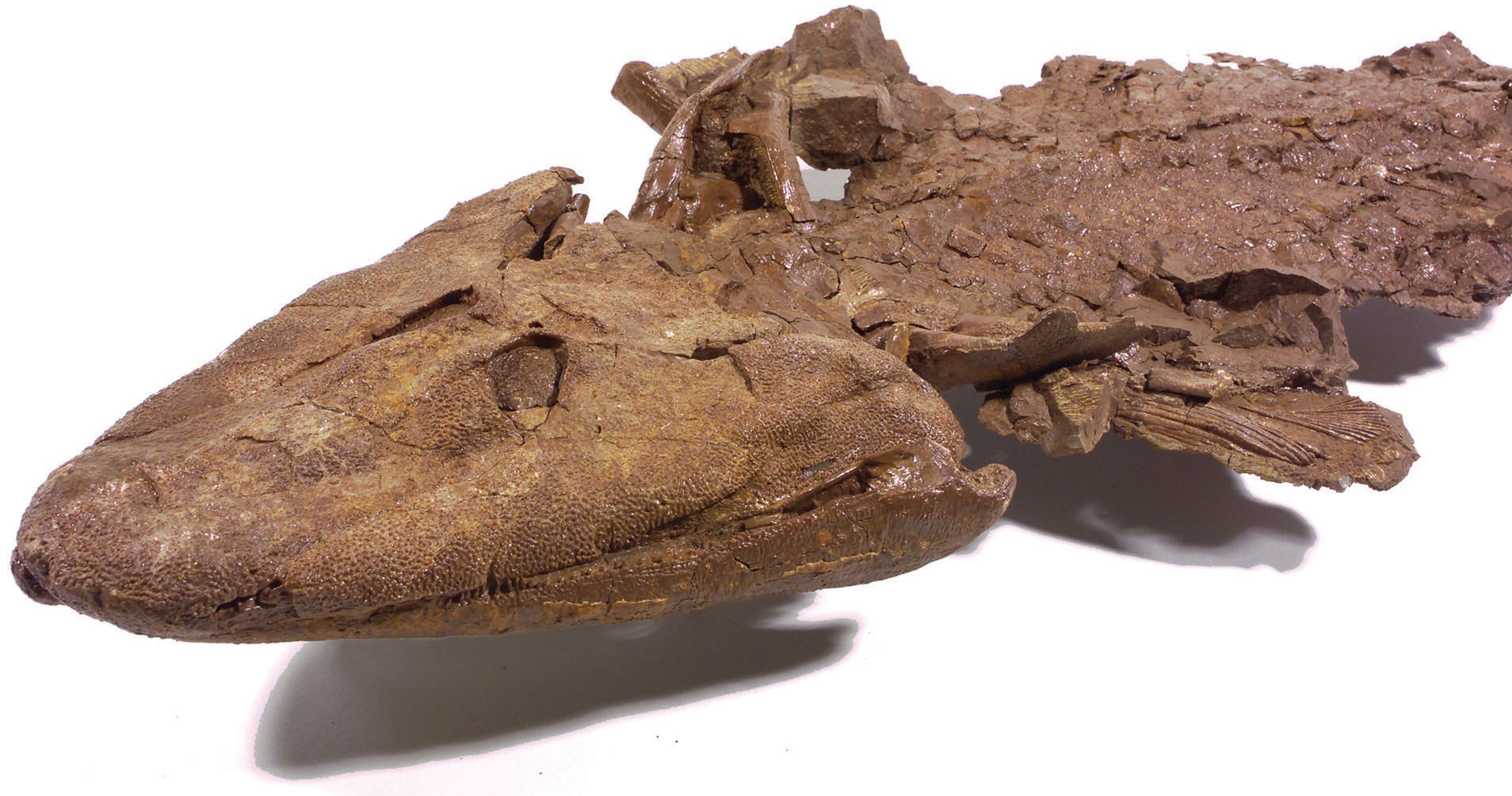READING THE FOSSIL RECORD
DESCENT WITH MODIFICATION Darwin’s term for evolution, combining the ideas that all living things are related and that organisms have changed over time.
FOSSILS The preserved remains or impressions of once-living organisms.

The theory of evolution—what Darwin called descent with modification—draws two main conclusions about life on Earth: that all living things are related, and that the different species we see today have emerged over time as a result of natural selection operating over millions of years. Many lines of evidence support this theory (remember that in science a “theory” is an idea supported by a tremendous amount of evidence and which has never been disproved). One of the most compelling lines of evidence for evolution comes from fossils, the preserved remains or impressions of once-living organisms. Fossils are like snapshots of past life, capturing what life was like at particular moments in time.
They are formed in a number of ways: an animal or plant may be frozen in ice, trapped in amber, or buried in a thick layer of mud. The entombed organism is thereby protected from being eaten by scavengers or rapidly decomposed by bacteria. Over time, if conditions are right, the organism’s shape is preserved. Not all organisms are equally likely to form fossils, however: animals with bones or shells are more likely to be preserved than animals without such hard parts (think earthworms or jellyfish) that decay quickly. And conditions permitting fossilization are rare: the organism has to be in just the right place at just the right time (INFOGRAPHIC 16.1) .
Not every organism that dies forms a fossil. Organisms are more likely to fossilize if they have bony skeletons or hard shells. In addition, the organism must be covered quickly upon death or create an imprint in special types of sediment. Therefore, the fossil record is not a complete record of past life, but it has supplied an impressive body of evidence for evolution.

FOSSIL RECORD An assemblage of fossils arranged in order of age, providing evidence of changes in species over time.
PALEONTOLOGIST A scientist who studies ancient life by examining the fossil record.
356
Because not all organisms are preserved, the fossil record is not a complete record of past life. Nevertheless, the existing fossil record is remarkably rich and offers an exciting window into the past. Paleontologists, scientists who study ancient life, have uncovered hundreds of thousands of fossils throughout the world, from many evolutionary time periods. When fossils are arranged in order of age, they provide a tangible history of life on Earth. The fossil record is extensive enough to show the overall arc of life and provides compelling evidence in support of Darwin’s theory.
For example, if all organisms have descended from a single common ancestor billions of years ago, as the theory of evolution concludes they did, then we would expect the fossil record to show an ordered succession of evolutionary stages as organisms evolved and diversified. And, indeed, that is exactly what you see: prokaryotes appear before eukaryotes, single-cell organisms before multicellular ones, water-dwelling organisms before land-dwelling ones, fish before amphibians, reptiles before birds.
357
Moreover, we would expect to see changes over time in a family of organisms, and we do. One exceptionally well studied example is horses. Comparisons of modern-day horse bones with fossils of horse ancestors reveal how, in the course of evolution, horses have lost most of their toes. The fossils show a continual series of changes over time, with the most recent fossils being the most similar to modern organisms, and the more ancient fossils being the most different. But they all clearly share a family resemblance (INFOGRAPHIC 16.2) .
The fossil record of horses supports the theory of descent with modification. Forelimb fossils are similar to one another, but show changes over time from the earliest horse ancestors to modern-day horses as species diverged from a common ancestor. In the fossil record we can observe over time a reduction in toe number, as the central toe became dominant, allowing horses to move more rapidly in new prairie-like environments.

358
Descent with modification also predicts that the fossil record should contain evidence of intermediate organisms—those with a mixture of “old” and “new” traits. Darwin acknowledged in The Origin of Species that the fossil record of his day did not provide many examples of such intermediate organisms—a state of affairs he described as “probably the gravest and most obvious of all the many objections which may be urged against my views.” Yet Darwin knew that if his hypothesis were correct, then such intermediate fossils would eventually be found. And indeed they have been. Scientists have discovered animals with mixtures of reptile and bird characteristics, and animals with mixtures of reptile and mammal characteristics. But the transition between fish and amphibians has remained more obscure.